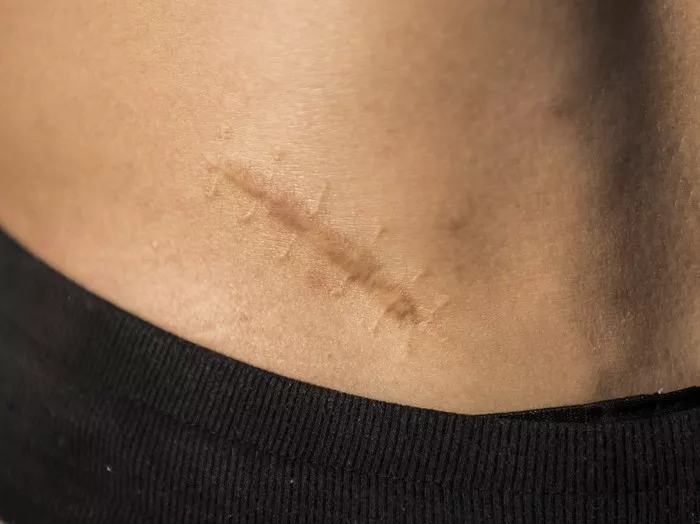Lauric acid is a medium-chain fatty acid found naturally in various plant-based oils and animal fats. Its reputation has grown in the skincare world due to its powerful properties that benefit the skin in numerous ways. From antimicrobial effects to moisturizing and anti-inflammatory properties, lauric acid has become a staple ingredient in many skincare products. This article explores what lauric acid is, its benefits for the skin, how it works, and how you can incorporate it into your skincare routine.
What Is Lauric Acid?
Lauric acid is a saturated fatty acid with a 12-carbon atom chain. It is commonly found in coconut oil, palm kernel oil, and breast milk, making it a naturally occurring compound. In skincare, it is typically extracted from coconut oil due to the high concentration it contains.
In its pure form, lauric acid is a white, waxy substance at room temperature, but when diluted or incorporated into skincare formulations, it becomes a smooth, absorbable oil. Its composition allows it to penetrate the skin easily, delivering benefits directly to the dermal layers.
The Science Behind Lauric Acid
Lauric acid is unique because of its molecular structure, which allows it to have both oil and water-soluble properties. When applied to the skin, it has the ability to penetrate deep into the epidermis, which helps improve the skin’s moisture retention. This makes it an excellent moisturizing agent, especially for dry skin.
It is also known for its antimicrobial properties. Lauric acid can help eliminate bacteria and other harmful microorganisms that contribute to acne breakouts and skin infections. This makes it particularly useful in products designed for acne-prone skin.
Benefits of Lauric Acid for Skin
1. Antimicrobial Properties
One of the most significant benefits of lauric acid is its antimicrobial activity. Studies have shown that lauric acid has the ability to fight off bacteria, fungi, and viruses. This is due to its ability to disrupt the lipid membranes of harmful microorganisms, effectively killing or neutralizing them.
For individuals with acne-prone skin, lauric acid is especially beneficial. The bacteria that contribute to acne, such as Propionibacterium acnes, are sensitive to lauric acid. By incorporating lauric acid into skincare, it can help keep these bacteria in check, reducing the likelihood of breakouts and promoting clearer skin.
2. Anti-Inflammatory Effects
Lauric acid also has anti-inflammatory properties, which can help soothe irritated skin. Inflammation is a key factor in many skin conditions, including acne, eczema, and rosacea. By reducing inflammation, lauric acid can help calm the skin, reducing redness, swelling, and discomfort associated with these conditions.
Its soothing properties also make it a great option for those with sensitive skin. Lauric acid’s ability to calm inflammation can help prevent flare-ups of conditions like eczema or psoriasis, where the skin becomes inflamed and irritated.
3. Moisturizing and Hydrating
Another benefit of lauric acid is its ability to hydrate and moisturize the skin. Lauric acid helps to lock in moisture by forming a protective barrier on the skin’s surface, preventing water loss. This can be particularly beneficial for people with dry or dehydrated skin, as it helps to maintain the skin’s moisture levels throughout the day.
The moisturizing effect of lauric acid is also long-lasting, making it an excellent ingredient in body lotions, facial moisturizers, and lip balms. Because it is a fatty acid, it helps to replenish the skin’s natural oils, keeping it soft and supple.
4. Skin Barrier Protection
The skin’s barrier is essential for protecting it from harmful environmental factors, such as pollutants, toxins, and pathogens. Lauric acid has been shown to support and strengthen the skin barrier, enhancing its ability to protect the body from external stressors.
By improving the integrity of the skin’s protective barrier, lauric acid helps prevent moisture loss and protects the skin from irritants that can lead to conditions like eczema and dermatitis.
5. Anti-Aging Benefits
Lauric acid also boasts anti-aging properties. It helps promote the regeneration of healthy skin cells and can improve the skin’s elasticity. This makes it a useful ingredient in anti-aging products aimed at reducing fine lines and wrinkles.
By encouraging skin renewal and improving moisture retention, lauric acid can keep the skin looking youthful and radiant. Its ability to maintain skin hydration also helps prevent the dryness and dehydration that often leads to visible aging signs like fine lines and dull skin.
How Lauric Acid Works in Skin Care Products
Lauric acid is often incorporated into skincare products in the form of oils, serums, lotions, and cleansers. When combined with other ingredients, it helps to enhance the overall performance of the product.
Cleansers and Face Washes: Lauric acid’s antimicrobial properties make it a powerful ingredient in facial cleansers. It helps remove dirt, oil, and impurities from the skin while maintaining a healthy balance of skin flora.
Moisturizers: As a moisturizer, lauric acid helps lock in hydration and strengthen the skin’s natural barrier. It is often combined with other hydrating ingredients like glycerin or hyaluronic acid to provide long-lasting moisture.
Acne Treatments: Lauric acid is a common ingredient in acne treatments because of its ability to fight acne-causing bacteria. It helps reduce the appearance of acne while preventing new breakouts.
Anti-Aging Serums: Due to its skin-regenerative properties, lauric acid is often found in anti-aging serums and treatments. It works alongside other antioxidants and peptides to promote youthful-looking skin.
Using Lauric Acid in Your Skin Care Routine
For those interested in incorporating lauric acid into their skincare regimen, there are a few ways to do so effectively:
Coconut Oil: As a natural source of lauric acid, coconut oil can be applied directly to the skin as a moisturizer. However, because coconut oil can be comedogenic for some individuals, it is important to patch-test it before applying it to the entire face.
Skincare Products with Lauric Acid: Many skincare products contain lauric acid in varying concentrations. Look for serums, cleansers, or moisturizers that list lauric acid or coconut oil as an ingredient.
Mixing with Other Oils: Lauric acid can be combined with other oils, such as jojoba oil or argan oil, to enhance its moisturizing and soothing properties.
Patch Testing: As with any new skincare ingredient, it is always a good idea to patch-test lauric acid products, especially if you have sensitive skin or are prone to allergic reactions.
Potential Side Effects of Lauric Acid
While lauric acid is generally considered safe for most skin types, there are a few potential side effects to be aware of:
Clogged Pores: For those with oily or acne-prone skin, lauric acid may clog pores, leading to breakouts. Always patch-test before full application, and opt for non-comedogenic products if this is a concern.
Skin Sensitivity: Some individuals may experience irritation or a reaction when using products containing lauric acid. If irritation occurs, it is best to discontinue use and consult a dermatologist.
Allergic Reactions: Though rare, some individuals may be allergic to coconut oil or lauric acid. If you have a known coconut allergy, it is advisable to avoid products containing this ingredient.
Conclusion
Lauric acid is a powerhouse ingredient in skincare due to its antimicrobial, anti-inflammatory, moisturizing, and anti-aging properties. Its ability to cleanse, hydrate, and protect the skin makes it an excellent choice for those looking to improve their skin’s health. Whether used in coconut oil or as part of a formulated product, lauric acid offers a wide range of benefits that can help address a variety of skin concerns. However, as with any new skincare ingredient, it is important to patch-test and consult a dermatologist if you have concerns about potential reactions.
By understanding the benefits of lauric acid, you can make more informed decisions about your skincare routine and enjoy healthier, more radiant skin.
Related Topics































